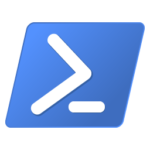We are excited to announce that an update to our preview of PowerShellGet 3.0 is now available on the PowerShell Gallery!
This release includes a number of bug fixes as well as support for specifying the temporary path used during installation of PSResources.
How to Install PowerShellGet 3.0 Preview 17
Prerequisites
Please note that this preview release of PowerShellGet 3.0 does not support PowerShell 7.0, 7.1 or 7.2-preview1.
This is a temporary issue due to a dependency and should be resolved in future releases. This release does support Windows PowerShell 5.1, PowerShell 7.2 and 7.3-previews.
Please ensure that you have the latest (non-prerelease) version of PowerShellGet and PackageManagement installed. To check the version you currently have installed run the command Get-InstalledModule PowerShellGet, PackageManagement
The latest version of PowerShellGet is 2.2.5, and the latest version of PackageManagement is 1.4.7. To install the latest versions of these modules run the following: Install-Module PowerShellGet -Force -AllowClobber
Installing the Preview
To install this preview release side-by-side with your existing PowerShellGet version, open any PowerShell console and run: Install-Module PowerShellGet -Force -AllowPrerelease
If you have PowershellGet v3 already you can run Update-PSResource PowerShellGet -Prerelease
What to expect in this update
This release includes a number of bug fixes as well as additional support for specifying a temporary path for installation of PSResources. For additional context on scenarios where this may be useful please refer to this issue.
Features of this release
- Add -TemporaryPath parameter to Install-PSResource, Save-PSResource, and Update-PSResource
- Add String and SecureString as credential types in PSCredentialInfo
- Expand acceptable paths for Publish-PSResource (Module root directory, module manifest file, script file)
- Add -Force parameter to Register-PSResourceRepository cmdlet, to override an existing repository
- Add a warning for when the script installation path is not in Path variable
Bug Fixes
- Change casing of -IncludeXML to -IncludeXml
- Update priority range for PSResourceRepository to 0-100
- Editorial pass on cmdlet reference
- Fix issue when PSScriptInfo has no empty lines
- Make ConfirmImpact low for Register-PSResourceRepository and Save-PSResource
- Fix -PassThru for Set-PSResourceRepository cmdlet to return all properties
- Rename -FilePath parameter to -Path for PSScriptFileInfo cmdlets
- Fix RequiredModules description and add Find example to docs
- Remove unneeded inheritance in InstallHelper.cs
- Make -Path a required parameter for Save-PSResource cmdlet
- Improve script validation for publishing and installing
Features to Expect in Coming Preview Releases
This module is not yet complete. The focus for our next preview release is removing the dependency on the nuget APIs. This will allow us to resolve dependency loading issues that effect which versions of PowerShell this module will be compatible with. This update will also allow us to improve performance of the module and resolve a number of outstanding bugs that are due to limitations in the nuget APIs. For the full list of issues for our next preview release please refer to our GitHub project.
How to Track the Development of this Module
GitHub is the best place to track the bugs/feature requests related to this module. We have used a combination of projects and labels on our GitHub repo to track issues for this upcoming release. We are using the label Resolved-3.0 to label issues that we plan to release at some point before we release the module as GA (generally available).
To track issues/features for the next release, please refer to this GitHub project.
Timeline/Road Map
Expect to see preview releases as new functionality is added and bug fixes are made. User feedback will help us determine when we can have a Release Candidate version of the module which will be supported to be used in production. Based on user feedback, if we believe the 3.0 release is complete, then we will publish a 3.0 version of the module as Generally Available. Since these milestones are driven by quality, rather than date, we can not offer an exact timeline at this point.
How to Give feedback and Get Support
We cannot overstate how critical user feedback is at this stage in the development of the module. Feedback from preview releases help inform design decisions without incurring a breaking change once generally available and used in production.
In order to help us to make key decisions around the behavior of the module please give us feedback by opening issues in our GitHub repository.
Sydney Smith
PowerShell Team
The post PowerShellGet 3.0 Preview 17 appeared first on PowerShell Team.

